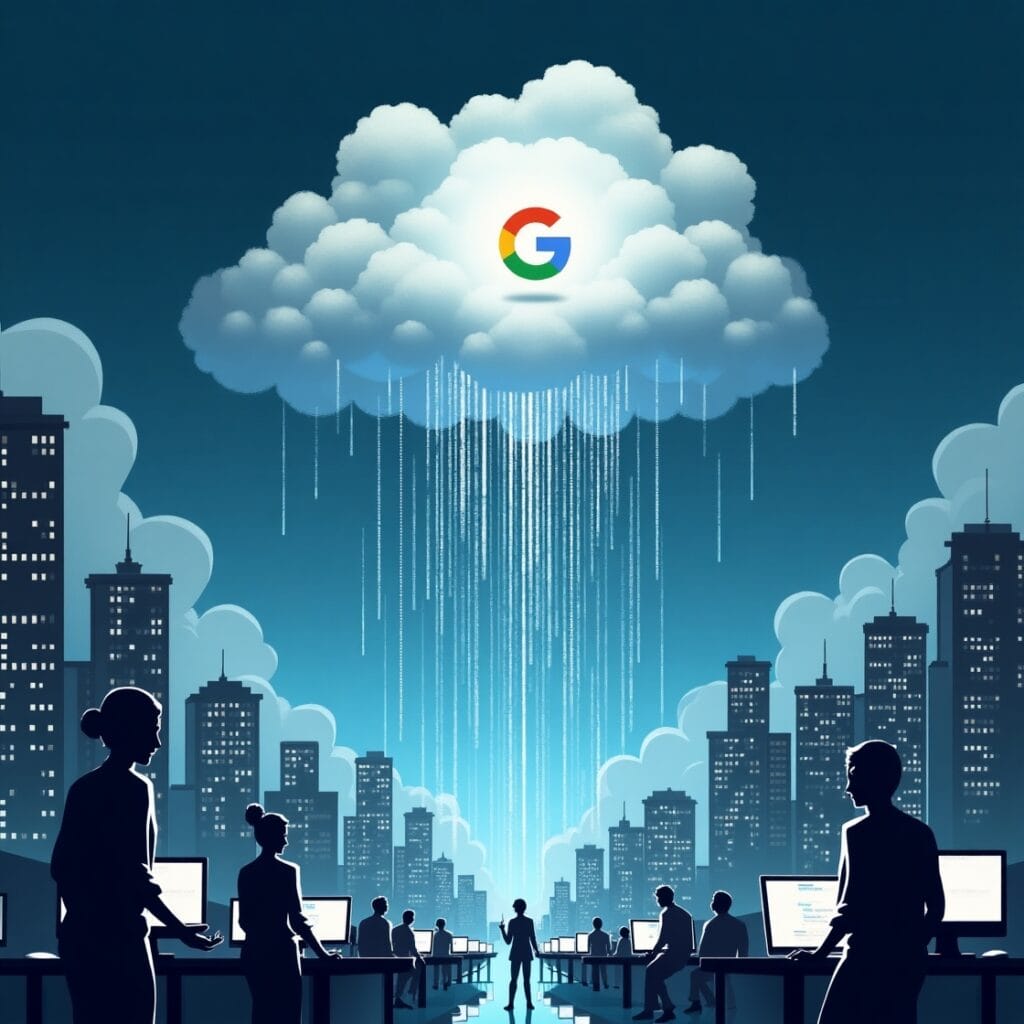June 25, 2025 –Google Cloud’s recent meltdown wasn’t a minor glitch—it was a wake-up call about the real dangers of Cloud Outage Risk. It took Spotify offline, left Snapchat silent, and even disrupted retailers like Marks & Spencer.
Here’s the deal: too many businesses rely on just one big cloud provider. And when that provider goes down… everything built on top of it goes down too.
Central Risk = Central Outage
This outage laid bare a cold, hard truth: when companies build on a single cloud platform, they’re building on quicksand. Other recent examples show the same pattern:
- In July 2024, a bad CrowdStrike update crashed millions of Windows machines.
- In June 2024, CDK Global was breached, hitting dealers and car buyers hard.
These incidents weren’t just IT problems—they caused real-world disruption.
This Is a Boardroom Issue, Not Just Tech
You may think this is stuff only IT teams care about, but you’d be wrong. When your systems go down, your business stops. Productivity falters, revenue drops, and reputations are at risk. If your digital backbone relies on one provider, you’ve built a chain that can break at a single weak link.
Shared Infrastructure Is a Real Risk
Think of modern IT like a power grid: when one transformer goes out, the lights go out for whole neighborhoods. Google’s outage showed that even services advertised as “99.99% reliable” can break—fast and hard. And they don’t just affect your email or intranet—they impact customers, patients, and real-world outcomes.

Plans That Actually Work
If you’re using the cloud (and who isn’t?), here’s what to actually do to stay safe:
- Build a multi-cloud or hybrid setup—don’t put all your eggs in one basket.
- Set up solid failover systems that take over when one cloud goes down.
- Test this stuff regularly—your disaster plan needs real-world proof.
- Have your leadership sign off on this—it’s a business decision as much as it is a tech one.
- Expect regulators to start paying attention too, especially in finance, healthcare, and critical services.
Insurance Now Matters Differently
Do you have cyber insurance? You might want to mix your coverage. It used to be about protecting against hacks or breaches—but now it needs to cover outages you didn’t cause, like a major cloud provider going offline.
Regulations (DORA in the EU, NIST CSF 2.0 in the US, PS21/3 in the UK) are pushing businesses to build out these protections. Insurance is becoming more than just a fallback—it’s a sign you ran the math on resilience.
Bottom Line
Cloud services are fantastic, but when they go down, the impact can be huge and often surprising. The best way to protect yourself? Don’t put all your eggs in one basket. Use a trusted cloud managed service to help you prepare for any disruptions, and make sure your insurance covers the risks you face today.
Because if the cloud sneezes next time—it won’t just be a sniffle. It could knock the whole system off its feet.
Read More : AnyMind Launches AnyAI on Google Cloud Marketplace